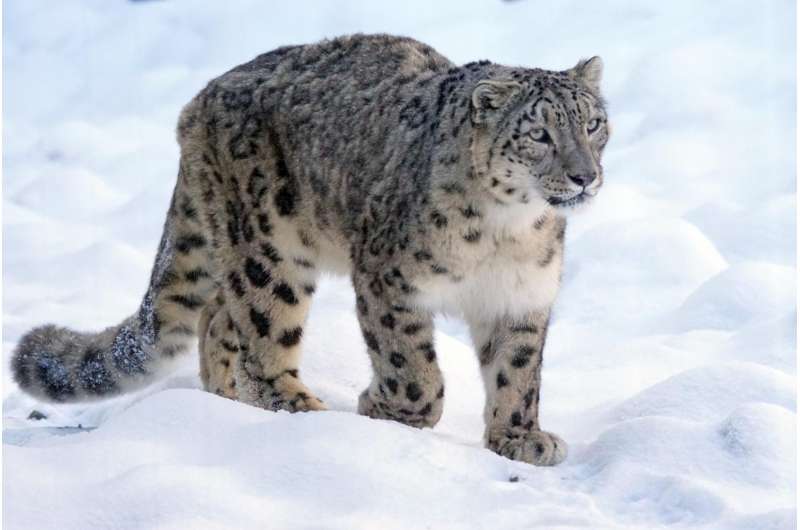Three new sub-species of snow leopard discovered

A recent research paper in the Journal of Heredity reveals that there are three sub-species of snow leopard. Until now, researchers had assumed this species, Panthera uncia, was monotypic.
Studying snow leopard scat from wildlife trails and marking sites revealed three primary genetic clusters, differentiated by geographical location: the Northern group, Panthera uncia irbis, found in the Altai region, the Central group, Panthera uncia uncioides, found in the core Himalaya and Tibetan Plateau, and the Western group, Panthera uncia uncia, found in the Tian Shan, Pamir, and trans-Himalaya regions. This is the first range-wide genetic analysis of wild snow leopard populations.
The snow leopard is considered the world's most elusive large big cat and inhabits a vast area of around 1.6 million km2 across 12 countries in Asia. It is a high-altitude specialist that primarily occupies mountains above 3,000m in elevation, a habitat characterized by low oxygen levels, low productivity, temperature extremes, aridity, and harsh climactic conditions. The snow leopard is the largest carnivore in its high-altitude habitat in many areas and is under substantial threat throughout its range.
The snow leopard remains the last of the five big cats to be the subject of a comprehensive subspecies assessment. This gap in research is a direct result of three challenges: the snow leopard inhabits remote regions that are often politically unstable and therefore harder to access, opportunities for radio or GPS tracking are limited because snow leopards are difficult to observe and trap in the wild, and most founders of the captive snow leopard population have an unknown origin.
Genetic sampling via the collection of scat along wildlife trails and marking sites is a non-invasive, effective, and efficient way to survey snow leopard populations and has become an important research approach, replacing previous methods which primarily relied on samples from hunter harvested or captive animals, tracking studies, or museum specimens.
The patterns of variation amongst the snow leopard subspecies suggest a 'barrier effect' due to the desert basins in the area, with the northern subspecies isolated by the Gobi Desert and the central and western species divided by the trans-Himalayas. Follow-up studies are needed to perform additional genetic analyses to provide more information on connectivity and structure within each region.
Dr Janecka explains that "This study is important as it provides the first glimpse of how snow leopard populations are structured and connected, in a nutshell, populations that are connected with other populations, are more stable and have a greater chance of persisting. Delineating subspecies provides two main benefits. The first is a better understanding of the evolution and ecology of the species. The second is that it enables more flexible conservation measures, so plans can be developed specific to the challenges faced within a particular region. Our study highlights the need for transboundary initiatives to protect this species, and other wildlife in Asia."
More information: Range-Wide Snow Leopard Phylogeography Supports Three Subspecies, Journal Of Heredity (2017). academic.oup.com/jhered/articl … 0.1093/jhered/esx044
Provided by Oxford University Press


















